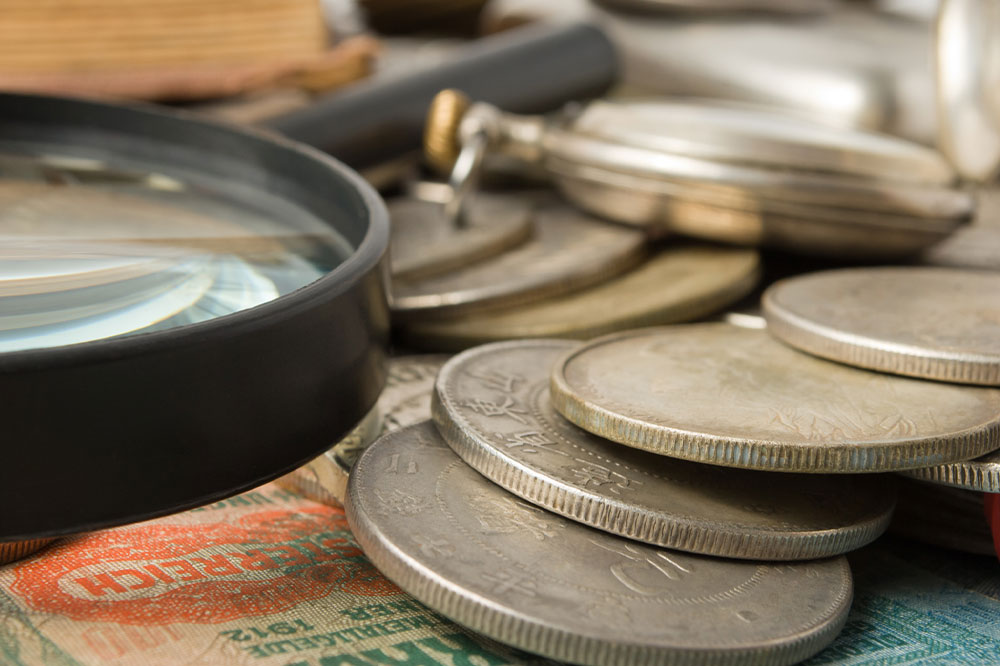Top 10 Rare and Precious Coins to Look Out For

Collecting precious coins has been a common interest among connoisseurs over the ages. However, collecting coins can be more than just a hobby. Rare, precious coins with intriguing histories are worth millions of dollars and, if purchased wisely, can play an integral role in multiplying wealth. Moreover, the internet has widened our horizons today, with vendors and buyers being able to carry out exchanges conveniently over online platforms. Here are some rare coins to look out for:
The 1804 Eagle Gold
Also called the turban head eagle, this coin was designed by Scottish-American engraver Robert Scot and was minted from 1795 to 1804. This coin was the largest denomination to be authorized by the Mint Act of 1792. These coins stopped being produced in 1804 but were reintroduced thirty years later for use in diplomatic presentations.
The 1787 Brasher Doubloon
The 1787 Brasher doubloon was invented by Ephraim Brasher, a goldsmith from New York, in the late 18th Century. This was the first gold coin to be minted in the country and enjoyed a supreme position in numismatic history. The front side of the coin entails the state seal and the rising sun, while the flip side comprises the American eagle and a shield. Currently, there exist only seven samples of this coin, with each being priced from $5 million to $9 million.
The 1343 Edward III Florin
This coin is among the only three pure gold coins available today and is among the oldest and most precious coins worldwide. The front side of this coin depicts King Edward III on his throne, while the flip side entails the Royal Cross situated within a quatrefoil. Two of these coins have been preserved at the British Museum in London and are worth $6.8 million each.
The 1804 Silver Dollar
Although this coin is referred to as the 1804 silver dollar, the coins were minted circa 1834-35 and declared as gifts from the U.S. Department of State to Asian rulers who would grant trade concessions to the country. The coin was minted in three different stages, due to which it is classified into three classes. The class-I coins came about in the 1830s and were offered as gifts to Asian rulers. The class-II coins were minted from 1858 to 1859 as an experiment by the U.S. Mint employees. The class-III coins were also introduced from 1858 to 1859 and were presented to certain favored collectors.
The 2000 Sacagawea Cheerios Dollar
The U.S. Mint initially minted these coins to place them inside 10 million Cheerios boxes with the intent to promote the 2000 Lincoln Cent, also called the “Golden Dollar.” However, an error in minting the 2000 Lincoln Cent, with the eagle tail feathers being engraved on the coin’s flip side, led to the inception of the 2000 Sacagawea Cheerios dollar. There now exist about 70 of these coins, each priced at approximately $25,000.
The 1794 Hair Silver Dollar
This coin is extremely valuable, primarily because less than 1,800 of these coins have been minted since its production in 1794-95. The coin features an engraving of Lady Liberty with flowing hair on its front side and the American eagle on its flip side. President George Washington and Alexander Hamilton conducted a study and emphasized the need for a national mint to the U.S. Government. As a result, the 1794 hair silver dollar was the first dollar coin to be minted by the U.S. Federal Government. This rare coin is priced at a whopping $10 million today.
The 1885 “Trade” Silver Dollar
The 1885 “trade” silver dollar is among the rarest coins in history, with only five of its samples available today. Designed by engraver Charles Barber, the coin was discovered twenty-five years after it was first minted. Hence, there was much debate regarding the year of its inception. However, Carl Carlston’s research confirmed that the 1884 and 1885 trade silver coins were produced in 1885. From being valued at $1,600 in the early 1950s, its value has risen considerably today, with the coin being priced at $3.5 million if in good condition.
The 1873-CC Seated Liberty Dime
This coin is considered the only unique from the Carson City Mint, which is believed to have minted its coins using gold extracted from nearby mines. The value of these coins is roughly $2.7 million today.
The 1870 Three-Dollar Gold Coin
This coin was priced at $6,87,500 in 1982, and there is only one known sample present today. Another sample of this coin is believed to have been buried underneath a cornerstone of a San Francisco building a long time ago.
The Liberty Head Double Eagle
Also known as the Coronet Double Eagle, this twenty-dollar gold coin was designed by the U.S. Mint Chief Engraver James B. Longacre. The coin was minted as a pattern coin in 1849 and for commercial purposes from 1850 to 1907. Only one sample of the 1849 double eagle, the oldest version of this coin, is preserved at the National Numismatic Collection, Smithsonian. These coins have been widely popular since their inception and were used for trade by banks and merchants. They stopped being minted in 1907 when they were replaced by the Saint-Gaudens double eagle. Many of these coins were also melted when President Roosevelt demanded gold coins from the public in 1933. Several double eagles were used in international transactions; the ones placed in international bank vaults have now been recovered to be sold to coin connoisseurs and gold collectors.
Coin collection is a meticulous – albeit highly rewarding – process requiring extensive research on coin trends and market prices. While looking for rare coins, it is advisable to pick the ones that are predicted to increase in value. Collectors should also familiarize themselves with common numismatic terms to be able to venture into the coin-collection arena effortlessly.






